What Wonders Will ARM in FPGA’s Clothing Perform? – Zynq
The term Zynq easily brings to mind zinc, the most common chemical element found in batteries, solar screens, alloys, and pharmaceuticals. Zinc can enhance functionality when alloyed with other metals, displaying various colors depending on the alloy’s composition. The most common use of zinc is electroplating. So, what is the connection between this name and electroplating? In April 2010, at the Embedded Systems Conference in Silicon Valley, Xilinx released the architecture details of its extensible processing platform, a SoC based on the ubiquitous ARM processor designed to meet the high performance, low power, and multi-core processing requirements of complex embedded systems. The core essence of the Xilinx extensible processing platform chip hardware is to use a general-purpose dual ARM Cortex-A9 MPCore processor system as the ‘main system,’ combined with low-power 28nm process technology, to achieve high flexibility, powerful configurability, and high performance. Because the programmable logic portion of this new device is based on Xilinx’s 28nm 7-series FPGA, the product line’s name includes ‘7000’ to maintain consistency with the 7-series FPGA and facilitate future product naming within this series. Besides the chip, the Xilinx Zynq-7000 series also forms the foundation of the final platform product.The software development and hardware design implementation tools provided by members of the Xilinx Alliance Program ecosystem and the ARM Connected Community, along with widely adopted operating systems, debuggers, IP, and other elements, come together like ‘electroplating,’ making the extensible processing platform possible.
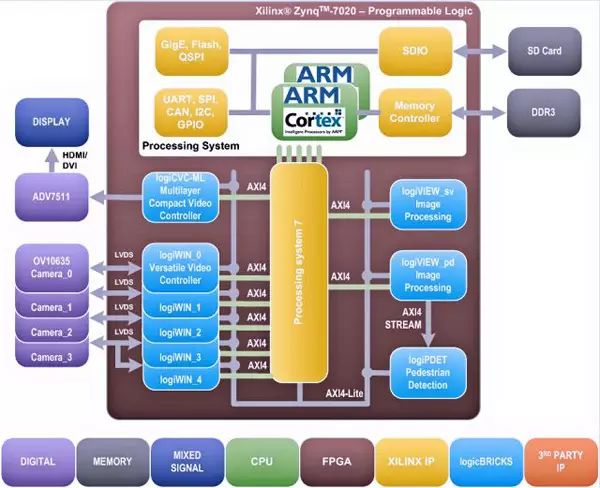
As the Communication Market Shrinks, FPGA Sees New Opportunities
Once, FPGA was extremely popular in the communication market, handling tasks such as network packet forwarding, distribution, address translation, and wireless protocol algorithms; however, with the development of ASICs, network processors are becoming increasingly powerful and integrating vast amounts of network hardware resources. Some communication manufacturers, like Huawei, are making strides in chip development, leading FPGA to often become merely a verification tool for first-generation products in the communication market.
Now, with the rise of smart industry in industrial automation and the demand for deep learning algorithms, as well as big data acceleration, FPGA has found a new place to shine.
With the introduction of the 28nm Zynq-7000 All Programmable SoC by Xilinx, FPGA is accelerating in industrial applications, with a rapid increase in industrial-grade customers far exceeding those in the communication sector. How will Xilinx Zynq devices profoundly transform industrial applications?
Industrial automation refers to the measurement, manipulation, and information processing and process control of machinery or production processes without the need for direct human intervention. It involves technologies from mechanical, microelectronics, and computer fields, requiring information collection, processing, analysis, transmission, and control. Traditionally, industrial automation did not require cutting-edge semiconductor technology products; however, with the rise of smart factories and smart industrial automation, the latest technologies are now being adopted.
Using motor control as an example, after adopting FPGA, the speed of the control loop can be increased by more than 15 times! This means efficient and precise control, aligning with the trends of energy conservation and emission reduction.
FPGA in Industrial Applications Focuses on Four Key Areas: Motor Control, Industrial Networking, Machine Vision, and Industrial Safety. In motor control, designers focus on reducing noise, minimizing vibration, lowering EMI, achieving higher precision, reducing energy consumption, and ensuring safety. Their challenges include how to achieve differentiation, reduce total system costs, manage system complexity, and enhance system safety. FPGA’s characteristics can effectively address these challenges, with advantages in motor control summarized as reducing total system costs, increasing solution flexibility, extending application lifecycle through interface expansion, and enhancing system performance.
FPGA excels in parallel processing, making it significantly superior to traditional MCU + DSP solutions in fields requiring multiple motor controls.
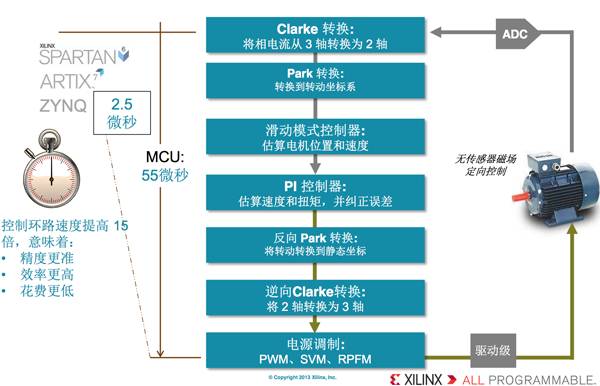
ZYNQ: 2.5us MCU: 55us
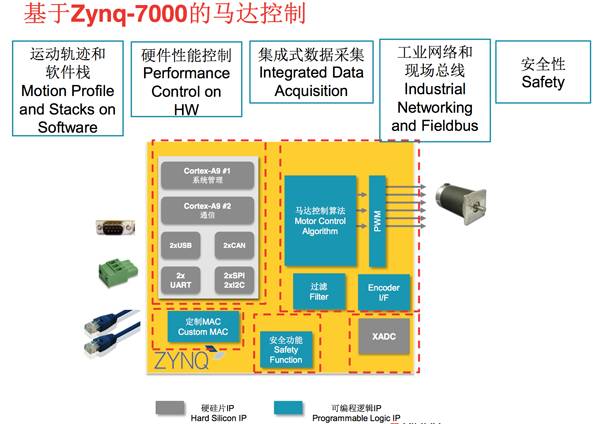
The advantages of FPGA in industrial networking include support for cabling and real-time network protocols, integration of networking and customized functions to reduce BOM costs, rich IO and logic element support for multi-protocol conversion, high integration with low latency performance, mature development boards and reference designs to shorten development time, support for long lifecycle solutions, and integration of various network security functions. Regarding long lifecycle solutions, I have firsthand experience; some of our clients are still using products from ten years ago, and we continue to provide support and services for their needs.
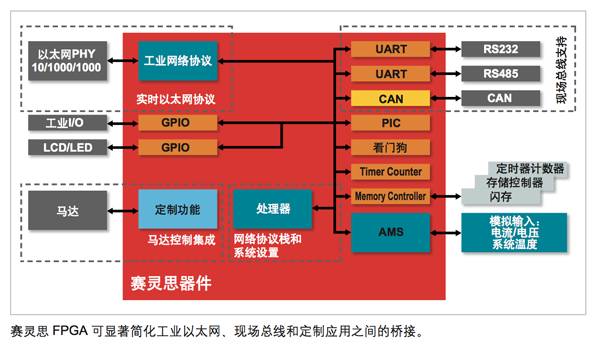
SoC-e has implemented high-reliability seamless redundancy protocols (HSR) and parallel redundancy protocols (PRP) on the Zynq-7000 All Programmable SoC. This solution features high-precision timing functions and can be applied in smart grid fields such as power automation and substations, as well as in high-speed rail and other rail transportation sectors. Compared to traditional RSTP, MSTP, or proprietary ring network protection technologies, it can achieve true ‘zero packet loss’ and ‘zero switching’ network redundancy protection technologies.
Applications of Visual Recognition in Advanced Driver Assistance Systems (ADAS)
Xylon and Xilinx have just announced the launch of a new ADAS (Advanced Driver Assistance Systems) development kit, enabling the development of driving assistance systems based on the fusion of video streams from multiple onboard cameras.
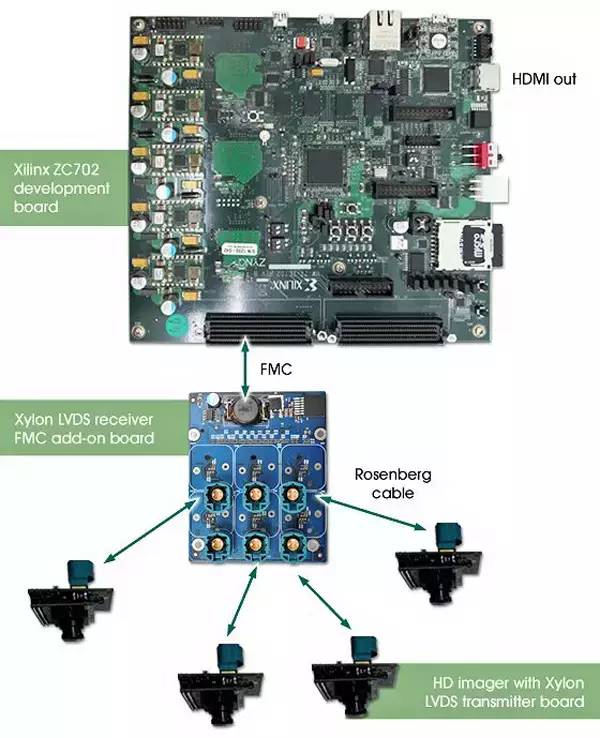
Have you seen Audi’s automatic parking technology demonstration, where a car can find and park in a space without driver intervention? Have you played Xbox 360 games using the Kinect controller?
If so, you might be witnessing the arrival of the Smarter vision system era. From high-end electronic systems to ordinary devices, Smarter vision technology impacts various forms of products. While today’s systems are already impressive, some experts predict that in the next decade, most electronic systems across automotive, factory automation, healthcare, surveillance, consumer products, aerospace, and defense will incorporate even more advanced Smarter vision technology.
As the sophistication of Smarter vision systems increases, we may have the opportunity to ride in automated vehicles flowing seamlessly on networked highways. Remarkable robotic-assisted surgical systems will further develop in medical devices, aiding surgeons in remote surgeries. Television and the internet will reach new levels of immersion and interaction, with content displayed on screens in cinemas, homes, and stores tailored to each consumer’s interests and even emotions.
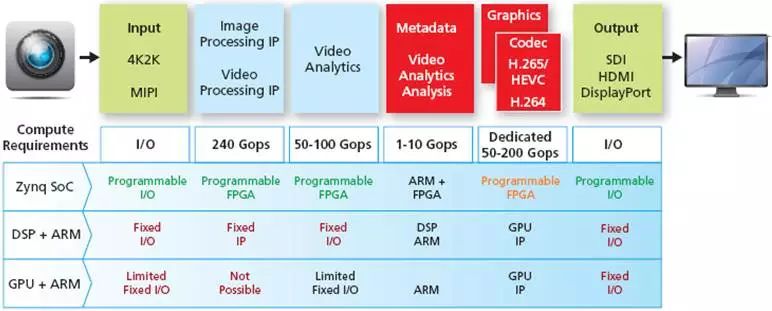
Advanced video systems not only enhance and analyze images but also trigger actions based on these analyses, significantly controlling computational functionality requirements. Smarter vision solutions from Xilinx’s All Programmable portfolio are at the forefront of this revolution. Based on the ZynqTM-7000 All Programmable SoC, which integrates a dual-core ARM CortexTM-A9 MPCORETM, programmable logic, and various essential peripherals on a single chip, Xilinx has introduced a supportive infrastructure for tools and IP that will play a crucial role in realizing these visual innovations and accelerating their delivery. This supportive infrastructure includes VivadoTM HLS (High-Level Synthesis), the new IP Integrator tool, OpenCV (Computer Vision) library, SmartCORETM IP, and dedicated development kits.
Why Did Zynq Choose A9?
Why did Xilinx choose to collaborate with ARM to develop a dual-core Cortex-A9 MPCore processor? Because ARM processors are industry-leading, widely adopted by customers, and have a mature overall ecosystem and support tools.
After 20 years of development, despite the increasing number of processors, the number of mainstream platforms has decreased. The American magazine Microprocessor Forum noted that in 1992, numerous processor platforms were active (Figure 2), but by 2009, only four mainstream platforms remained: ARM, x86, PPC (PowerPC), and MIPS. Among them, ARM has become a focal point due to its rich ecosystem. ARM President Tudor Brown stated that ARM has 900 partner companies globally, and the momentum of partnerships is strong (Figure 3). He promised, “In the future, ARM will continue to invest in its product roadmap and partnerships to ensure customers have a robust channel and ecosystem.”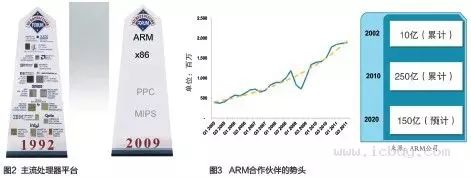
Although ARM9 and ARM7 have the highest global licensing volumes (Figure 4) and are the best-selling; the Cortex-A series is growing the fastest among all series, even surpassing the M series.  Besides Xilinx’s Zynq family, many companies have already developed or are developing innovations based on Cortex-A9, including smartphones, tablets, 3D TVs, network SoCs (System on Chip), network servers, and supercomputers.
Besides Xilinx’s Zynq family, many companies have already developed or are developing innovations based on Cortex-A9, including smartphones, tablets, 3D TVs, network SoCs (System on Chip), network servers, and supercomputers.
These companies choose A9 because it is a high-performance product in the ARM processor series, based on the ARMv7 architecture. The design of the A9 processor is based on an advanced speculative eight-stage pipeline, which features efficiency, dynamic length, superscalar multiple issuing, and out-of-order completion, allowing the processor’s performance, efficiency, and functionality to reach high levels, meeting the demands of cutting-edge products in consumer, networking, enterprise, and mobile applications.
The Integration of Processor and FPGA is a Chemical Reaction: 1+1>2
Market research shows that FPGA currently accounts for 50% to 70% of all embedded systems. Therefore, this market is enormous, and the typical engineering solution is “embedded processor FPGA.” However, developers are not satisfied with this, or the existing devices in current applications do not meet their needs, whether traditional single processors, single FPGAs, ASICs, or ASSPs, especially for software development companies, programming FPGA is quite challenging. We found that by 2014, approximately $12.7 billion of the market could not be served by traditional FPGAs.
The current four major challenges are: improving system performance, reducing system power consumption, minimizing circuit board area, and lowering overall system costs.
A Zynq device can achieve the functionality of “embedded processor + FPGA.” Notably, Zynq does not simply integrate FPGA with the processor; it is an organic combination of the two. Traditional interconnections between FPGA and processors utilize PCIe, whereas Zynq uses the AXI4 connection bus, allowing for a wide bandwidth between the FPGA and the processor. The dual-chip solution of FPGA + CPU shows that the interconnection bandwidth using PCIe between FPGA and processor is narrow, and there are fewer PCIe channels, meaning that sometimes more than half of the FPGA is used to support bandwidth; and both devices connect to external memory.
By using Zynq, the intermediate PCIe connection can be removed, and memory can be shared with the FPGA, significantly reducing costs and power consumption.
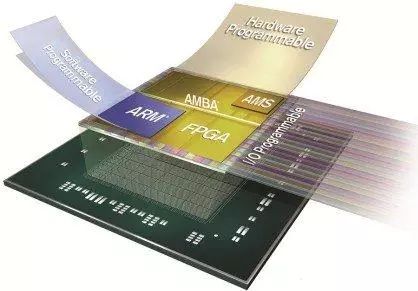
ARM China President Wu Xiangang pointed out: “It is well known that the functionality of next-generation system processing is not just about CPU capabilities; the interface processing capability largely determines the entire system’s application capabilities. Therefore, we often see the same design, and due to good interface integration, functionality can vary by 50%. We are pleased that Xilinx’s Zynq has achieved high data throughput capabilities on the new AMBA AXI4 (Advanced eXtensible Interface 4) interface.”
Zynq has been around for a while. However, with the development of the Internet of Things and smart industry, having ARM wear FPGA’s clothing will undoubtedly lead to an even more exciting performance.